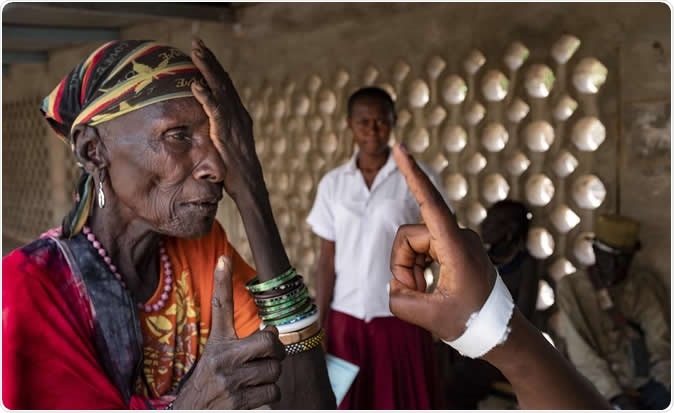Vision is the most compelling contributor to the quality of our senses, and yet eye care lags behind many other areas in the importance it commands in public health.
The World Health Organization (WHO) has said, in its report timed for World Sight Day (October 10), that over 2.2 billion people around the world (out of a total of 7.7 billion) are blind, completely or partially. Of these, a billion or more are suffering only because of lack of accessibility to the care they need to manage causes of preventable blindness.

Image Credit: WHO
Causes of vision impairment
The increase in blindness today is caused by multiple factors such as an overall increase in population age, dramatic changes in lifestyle, and poor access to eye care, all of which are more pronounced in poorer regions of the world. Thus an increase in the number of people with diabetes is associated with a high incidence of diabetic retinopathy, which affects almost 150 million worldwide.
Preventable causes of blindness include refraction errors like long- or shortsightedness, which affect over 800 million people unnecessarily for want of access to corrective eye lenses (glasses); glaucoma, seen in 76 million; and cataract, which needlessly blinds 65 million people worldwide.
Blindness can result from conditions that are associated with impaired vision as well as those that don’t. The former include cataract or trachoma, and of course refractive errors, while the latter include dry eye and conjunctivitis. The increase in the ageing population will increase the numbers in both categories since these conditions become more common with age.
The increased percentage of time spent inside buildings has resulted in more ‘near work’ performed by the eye, leading to a higher incidence of myopia. Diabetes is also a major cause of visual impairment due to retinopathy. Worst of all is blindness due to poor eye care services that hinder or delay early and appropriate treatment.
Salient findings
The chief features of the report include:
- Considerable disparity between men and women, rich and poor, urban and rural populations, young and old, healthy and disabled people, majority and minority groups, with the latter category in each case bearing the brunt
- Uncorrected short-sightedness in poor regions is fourfold that seen in richer places
- Blindness estimates in poorer areas of Africa and Asia at least 8 times as high as in richer countries around the world
- Women much more likely to have untreated cataract and trachoma-induced eyelid deformity causing blindness, especially in poor regions
- Older people with age-associated visual impairment number almost 200 million with age-related macular degeneration and 1.8 billion with presbyopia, an age-related refractive error due to the loss of lens elasticity and the resulting inability to focus on objects near at hand
The future
To meet the needs of the 1 billion in the world whose optical needs are unmet just because they have no access to services to supply simple, effective and inexpensive remedies such as corrective lenses or cataract surgery, only about USD 14 billion is required – a significant sum, doubtless, but dwarfed by the USD 90 billion spent on cancer without the same results to show for it!
Similarly, about 12 million people could have avoided blindness if they had been treated properly for trachoma, diabetic retinopathy and glaucoma, at a cost of less than USD 6 billion. In the words of the report, “This represents a significant opportunity missed in preventing the substantial personal and societal burden associated with vision impairment and blindness.”
The report also addresses those who have untreatable blindness, stating that there are aids which can assist them to live independently. These include optical magnifiers, Braille for reading, smartphone apps called wayfinders, and training blind people to be mobile using white canes.
The purpose of the report is to activate a global effort by countries all over the world to address challenges of accessibility in eye care services, by integrating them into already functioning health systems. They call this IPCEC (integrated people-centered eye care), referring to a system of eye care that ensures a wide range of eye conditions are treated, rehabilitated, prevented and eye health promoted at all levels of the health system and all locations, as well as in linked areas of society. This will make sure that nobody slips through the holes and loses vision unnecessarily.
WHO Director-General Tedros Adhanom Ghebreyesus says, “Eye conditions and vision impairment are widespread, and far too often they still go untreated. People who need eye care must be able to receive quality interventions without suffering financial hardship. Including eye care in national health plans and essential packages of care is an important part of every country’s journey towards universal health coverage.”